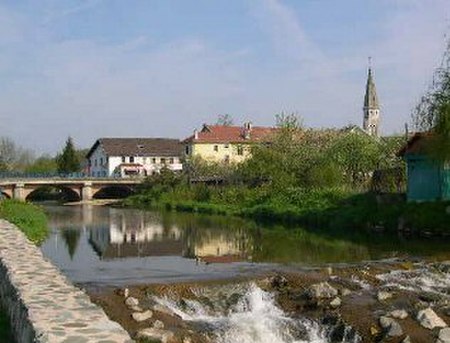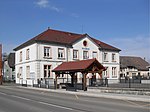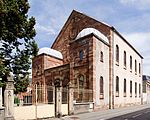From 1949 to March 10, 1967, France's military operated within the NATO command structure, integrating its air defense system (the Défense Aérienne du Territoire (D.A.T.)) with that of NATO through the indirect use of American aid funds. Between 1953 and 1958, the D.A.T. built a radar station in an old troops shelter (in French : abri-caverne) near the fort, called Ouvrage "G". Called "Station Maître Radar 60/921", it was used beginning in 1959, covering an area on the surface of three times the area of the troops shelter.
Ouvrage "G" complemented Ouvrage F, another D.A.T. station located at the old Fort François de Guise at Metz, while Ouvrage H was established as Base aérienne 901 Drachenbronn/Station Maître Radar 50/921 in the former Maginot Ouvrage Hochwald. Ouvrage "G" was equipped with seven radar antennas installed on top of the fort. The principal radars are presently located on the Ballon de Servance.
The Ouvrage « G » is composed, at this creation, to 3 elements:
the fort du Salbert
baraques Fillod (examples here)
undergrounds buildings
The military vacated the Fort de Salbert in 1972 and removed the antennas from the fort. The city of Belfort took possession of the site. The foundations of the radars and the fort's heating oil tanks remain.
In 1990 Belfort concluded an agreement with an association without lucrative purpose named Les aventuriers de l'histoire to restore the site. The volunteer group cleaned, repaired, and worked to make the site ready for public visitation. The group's enthusiasm was tempered by repeated setbacks, culminating with the explosion of several improvised bombs on the site which released asbestos and made the site unusable for the public or for restoration work. By mutual agreement between the city and the volunteers, public access was discontinued and the aventuriers disbanded. Ouvrage "G" was closed, its doors welded shut.










